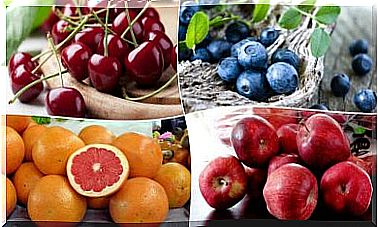Tricks To Give Vegetables An Exquisite Flavor

Cooking has never been something that can be called a simple task. Also, being able to balance all foods to suit the taste of each family member is a challenge, particularly if we add vegetables to the equation.
Remember that the way in which the human body assimilates pleasure is linked to the taste of food. On balance, an unfair measure. The taste of foods is what gives that feeling of pleasure when you eat. The vegetables can be penalized by this aspect.
Since we were children, perhaps the rejection of this group of foods has been growing because of the association between what our mother gave us to eat and what our mouth indicated respectively to the taste.
However, cooking today is more a matter of practicality than of dedication.
Based on the time we have to dedicate ourselves to cooking and the various and eloquent ways in which our culture has shaped us, we can give flavor to vegetables and thus obtain truly pleasant taste sensations.
Here is a list of tricks, ideal for being able to take advantage of them when we have to cook.
Finding the best and easiest formula to apply in preparations doesn’t have to be something that wastes us time and effort. Find out how and enjoy.
Tricks to add flavor to vegetables

Salty, sweet, bitter, spicy – anything is possible
Anyone can tell you that vegetables are very nutritious and beneficial for health.
But this leads us to another question: why does it seem so difficult to consume them if they do so well? It probably has something to do with the taste they leave in their mouth.
Discover below this series of little tricks, useful changes so that both you and those who taste your new creations can enjoy the delicious flavor of vegetables.
Sweet
Although it may seem questionable, most vegetables have a significant sugar content distributed in percentage based on the type.
In other words, radish and kale are both vegetables, but they don’t have the same amount of sugar, and they vary depending on how you prepare them.
Now, dry cooking methods, such as grilling or frying, can counteract any bitterness inherent in vegetables by caramelizing their sugars and intensifying their flavor.
If the vegetables are covered with a layer of oil, what is known as the “Maillard reaction” occurs.
Hot oil quickly evaporates moisture from the surface. As a result we get softer vegetables with a spectacular exterior.
In addition, the flavor is a delicacy between sweet and healthy, as well as being an ideal accompaniment to other ingredients.
Salty

Here we enter a field plagued by a proliferating subjectivity. The salting of the dishes tends to depend on the type of culture from which it comes.
For example, in India it is common to use heavily loaded condiments (curry, garlic, shallot, soy sauce, hot pepper) to give a distinctive flavor.
However, if you are the type of person who likes the tendency towards salt, regarding vegetables you need to know how to use it:
- With mushrooms, coriander, garlic or onion, one must be careful with the use of salt. These ingredients give off enough flavor, so too much salt would be counterproductive.
- However, as an accompaniment and sweeter foods, such as zucchini or cassava, the use of salt is absolutely recommended.
You have to try and evaluate if we are right or not.
The bitter-tasting vegetables
Bitter flavors, as surprising as they may seem to you, will be more useful to you than you can imagine. Thanks to the elements of the bitter character, they contrast with the sweet flavors.
Sweet and sour mint combined with peas and potatoes, or parsley in salads with sweet sauces, are obvious examples.
Cumin, for example, is perfect to accompany baked carrots.
Spicy

Compared to this trick, it must be kept in mind that the disproportionate use of spicy elements in food tends to be counterproductive to health.
Although it is fair to point out that, if you have the opportunity to experiment with its use frequently, the spicy touch will make dishes stand out for its powerful and exotic flavor.
The best known example of a spicy vegetable is chilli. This small ingredient produces a marked sensitivity and reaction in the taste buds.
Accompanied by other vegetables it will give your meals an exquisite pleasure of sensations.
Give the vegetables acidity
By itself, the taste of vegetables hardly contains acidity to the taste of the human palate.
However, we know that everything can be done in the kitchen. If you want to add a sour touch to the way you prepare vegetables, lemon (which is a fruit) will be your best ally.
Whether it’s adding lemon juice or just a splash, the result will always be felt.
It is more common to find this acid trick in salads, and almost always based on the taste of each palate. As with olive oil, vinegar or mustard, acidity is a purely subjective matter.
Don’t forget that cooking is an art characterized by love, creativity, freedom and dedication.
If you decide to go for the bolder combinations of vegetables and other types of food, you can do it.









